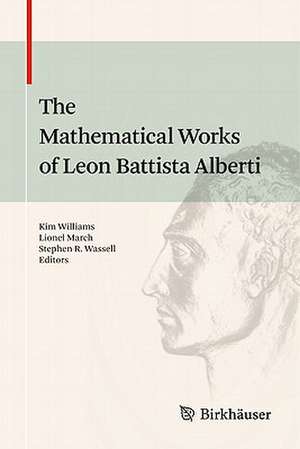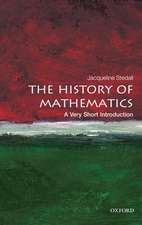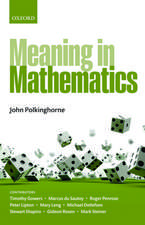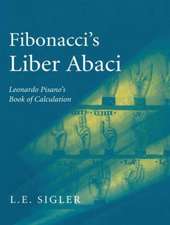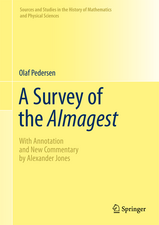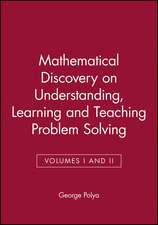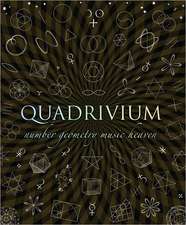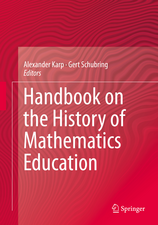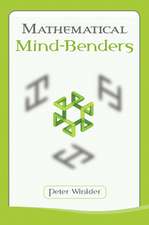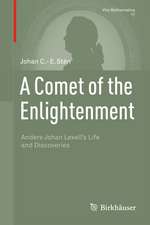The Mathematical Works of Leon Battista Alberti
Editat de Kim Williams, Lionel March, Stephen R. Wassellen Limba Engleză Hardback – 8 sep 2010
| Toate formatele și edițiile | Preț | Express |
|---|---|---|
| Paperback (1) | 384.70 lei 6-8 săpt. | |
| Springer – 20 sep 2014 | 384.70 lei 6-8 săpt. | |
| Hardback (1) | 390.63 lei 6-8 săpt. | |
| Springer – 8 sep 2010 | 390.63 lei 6-8 săpt. |
Preț: 390.63 lei
Nou
Puncte Express: 586
Preț estimativ în valută:
74.76€ • 81.17$ • 62.79£
74.76€ • 81.17$ • 62.79£
Carte tipărită la comandă
Livrare economică 23 aprilie-07 mai
Preluare comenzi: 021 569.72.76
Specificații
ISBN-13: 9783034604734
ISBN-10: 3034604734
Pagini: 236
Ilustrații: X, 221 p.
Dimensiuni: 155 x 235 x 20 mm
Greutate: 0.48 kg
Ediția:2010
Editura: Springer
Colecția Birkhäuser
Locul publicării:Basel, Switzerland
ISBN-10: 3034604734
Pagini: 236
Ilustrații: X, 221 p.
Dimensiuni: 155 x 235 x 20 mm
Greutate: 0.48 kg
Ediția:2010
Editura: Springer
Colecția Birkhäuser
Locul publicării:Basel, Switzerland
Public țintă
ResearchDescriere
Leon Battista Alberti was an outstanding polymath of the fifteenth century, alongside Piero della Francesca and before Leonardo da Vinci. While his contributions to architecture and the visual arts are well known and available in good English editions, and much of his literary and social writings are also available in English, his mathematical works are not well represented in readily available, accessible English editions have remained accessible only to specialists. The four treatises included here – Ludi matematici, De Componendis Cifris, Elementi di pittura and De lunularum quadratura – are extremely valuable in rounding out the portrait of this multitalented thinker. The treatises are presented in modern English translations, with commentary that is intended to make evident the depths of Alberti’s knowledge as well as address the treatises’ mathematical, historical and cultural context, their classical Greek roots, and their relationship to later works by Renaissance thinkers.
Cuprins
From the contents:Foreword (Robert Tavernor).- Introduction.- Ludi matematici (Mathematical games).- De Componendis Cifris (On writing in ciphers), Elementi di pittura (Elements of painting).- De lunularum quadratura (On the squaring of lunes).- Bibliography.- About the authors
Recenzii
From the reviews:
“The book under review contains, in parallel translation and with extensive commentary, Alberti’s short treatise On Painting. … The commentaries in the book are thorough and interesting. … a useful source for project work in the history of mathematics, parts of it being well suited to students with only modest mathematical understanding; others, such as the areas of lunes, leading into demanding ideas from later times.” (Peter Giblin, The Mathematical Gazette, Vol. 96 (536), March, 2012)
“The book under review contains, in parallel translation and with extensive commentary, Alberti’s short treatise On Painting. … The commentaries in the book are thorough and interesting. … a useful source for project work in the history of mathematics, parts of it being well suited to students with only modest mathematical understanding; others, such as the areas of lunes, leading into demanding ideas from later times.” (Peter Giblin, The Mathematical Gazette, Vol. 96 (536), March, 2012)
Textul de pe ultima copertă
Leon Battista Alberti (1404¬–1472) was a highly prolific polymath of the fifteenth century. Although his contributions to architecture and the visual arts are well known and available in good English editions, as are many of his literary and social writings, his mathematical works are not well represented. This present volume was planned to fill that gap, with entirely new English translations and critical commentaries making the works easily accessible for a wide readership of specialists and non-specialists alike.Four texts are included here. Although Alberti’s Commentarii rerum mathematicarum appears to be lost, we have his Ludi matematici . In these “games” Alberti describes twenty practical applications of mathematics in an accessible style. The translation is accompanied by a new transcript of the recently identified manuscript held in the National Library in Florence upon which it was based. In Elementi di pittura, Alberti provides a catalogue of definitions and geometric constructions, using Euclidean references but drawing a distinction between theoria of mathematical entities and praxis of painterly applications. Alberti’s most original mathematical contribution is a late work, De compendis cifris, first discussing the frequency of vowels, consonants, and different groupings in Latin, and then introducing a method of polyalphabetic substitution. Even more original is his enciphered code which permutes four numerals in two-, three-, and four-digit groups. De lunularum quadratura rehearses the classical demonstration of squaring a lune by Hippocrates.
Caracteristici
A collection of Alberti’s four mathematical treatises, intended to capture Alberti’s unique combination of formal and informal writing, will be available for the first time to an English-speaking readership
Commentary with illustrations sets Alberti’s mathematical works in their proper historical and cultural context, as well as collocate them within the entire range of Alberti’s architectural and literary works
Includes supplementary material: sn.pub/extras
Commentary with illustrations sets Alberti’s mathematical works in their proper historical and cultural context, as well as collocate them within the entire range of Alberti’s architectural and literary works
Includes supplementary material: sn.pub/extras
